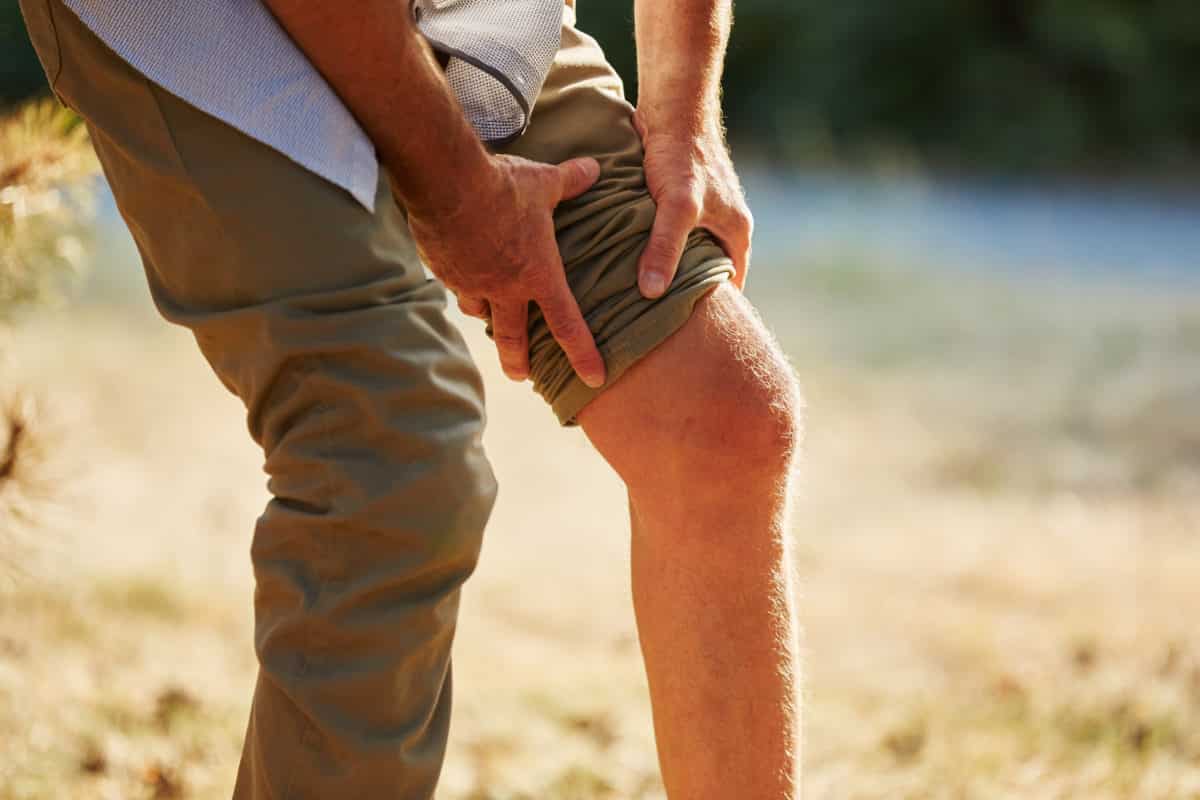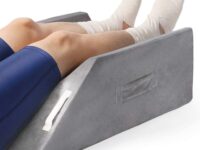A bone bruise in the knee is a common injury that can cause significant pain and discomfort. It often results from trauma or overuse, and while not as severe as a fracture, it can still impact one’s daily life and athletic performance. In this article, we will delve into the symptoms, causes, and treatment options for knee bone bruises to help you better understand this condition.
What is a Bone Bruise?
A bone bruise, also known as a bone contusion, is a traumatic injury to the bone that results from a direct impact or excessive force on a specific area. Bone bruises are often found in the knee joint, which is particularly susceptible to injury due to its complex structure and constant use. Unlike a typical soft tissue bruise, a bone bruise affects the underlying bone, causing pain and inflammation.
Bone Bruise in Knee Symptoms
- Pain: Pain is the most common symptom of a knee bone bruise. The intensity can range from mild to severe, depending on the extent of the injury. Pain may be sharp or dull, and it often worsens with weight-bearing activities.
- Swelling: Swelling around the affected area is another prominent symptom. This is the body’s natural response to injury and inflammation. Swelling may limit your range of motion and make the knee feel stiff.
- Bruising: Although the bruising in a bone bruise is not as visible as a typical skin bruise, some individuals may notice discoloration around the knee area, particularly if there is also soft tissue damage.
- Tenderness: The affected area may be tender to the touch, and even the slightest pressure can elicit pain.
- Limited Range of Motion: Knee bone bruises can restrict the knee’s range of motion, making it difficult to bend or straighten the leg fully.
- Popping or Clicking Sensation: Some individuals report hearing or feeling a popping or clicking sensation in the knee when they move it.
Causes of Bone Bruise in Knee Symptoms
Knee bone bruises usually occur as a result of trauma or excessive strain on the knee joint. Common causes include:
- Direct Impact: A sudden blow to the knee, such as a fall or collision, can cause a bone bruise. This often happens in contact sports or accidents.
- Overuse: Repetitive movements, particularly in sports that involve running, jumping, or pivoting, can lead to bone bruises. This is common in athletes and individuals who engage in high-impact activities.
- Torn Ligaments or Meniscus Injuries: In some cases, a bone bruise can occur in conjunction with injuries to the ligaments or meniscus in the knee.
Treatment Options
- Rest: The primary treatment for a knee bone bruise is rest. Avoid putting excessive weight on the affected knee to allow the bone to heal.
- Ice: Applying ice to the injured area can help reduce swelling and alleviate pain. Use an ice pack for 20-30 minutes every 2-3 hours.
- Compression: Using a compression bandage can help control swelling and provide support to the injured knee.
- Elevation: Elevating the knee above heart level when resting can minimize swelling and promote healing.
- Pain Medication: Over-the-counter pain relievers such as ibuprofen or acetaminophen can be used to manage pain and inflammation. However, consult a healthcare professional before using any medication.
- Physical Therapy: A physical therapist can help you regain strength and flexibility in the knee while minimizing the risk of complications.
- Bracing: In some cases, a knee brace may be recommended to provide additional support during the healing process.
- Surgical Intervention: In severe cases with associated ligament or meniscus injuries, surgical intervention may be required.
Hey there! Are you someone who’s been experiencing knee pain lately? Well, you’ve come to the right place! In this blog post, we’re going to dive into the world of knee symptoms and help you understand the ones you definitely should not ignore. Whether it’s a dull ache that won’t go away, a weird popping sound, or difficulty moving your knee, we’ve got you covered. Ignoring these symptoms might just lead to more trouble down the road, so it’s essential to pay attention to what your knees are trying to tell you! So, grab a cup of tea, get comfy, and let’s explore the 7 common knee symptoms you shouldn’t ignore.
Knee Pain: The Most Common Symptom
When it comes to bone bruise in knee symptoms, knee pain reigns as the most prevailing indication. This discomfort typically manifests as tenderness and swelling in the specific area where the bruise has occurred. Individuals who are suffering from a bone bruise in their knee may find themselves encountering these distressing sensations. The tenderness and swelling serve as telltale signs, alerting the individual to the presence of a bone bruise. Addressing such symptoms promptly is crucial to ensure proper management and recovery.
When it comes to bone bruise in knee symptoms, pain is a crucial indicator. The level of pain can vary from mild to severe, depending on the severity of the bruise. In more severe cases, even slight pressure can lead to sharp and intense pain. This discomfort often manifests specifically in the knee area, where the bone bruise is located. Recognizing and understanding the intensity of pain in relation to a bone bruise is essential for proper diagnosis and treatment.
Moreover, the symptoms of a bone bruise in the knee can significantly impact a person’s quality of life. The pain and discomfort associated with this condition can make it challenging for individuals to undertake routine tasks like walking or climbing stairs, leading to a loss of independence and mobility. Furthermore, the inability to fully extend the leg due to joint stiffness and pain can further restrict their range of motion and hamper their ability to engage in physical activities they once enjoyed. It is crucial for individuals experiencing these symptoms to seek medical attention promptly to ensure timely intervention and appropriate management, allowing them to regain function and alleviate their pain. By addressing these symptoms effectively, individuals can restore their quality of life and return to their daily activities with ease.
Swelling and Stiffness of the Joint
When it comes to bone bruise in knee symptoms, swelling and stiffness of the joint are two of the most prevalent indicators. These common symptoms can be distressing and affect one’s mobility. Swelling, which occurs due to the accumulation of fluids in the injured area, can lead to a visible enlargement of the knee. This often causes discomfort and difficulty in bending or straightening the leg. Additionally, stiffness adds to the discomfort experienced by those suffering from a bone bruise in the knee. It limits the range of motion and makes activities like walking or climbing stairs challenging. Overall, bone bruise in knee symptoms like swelling and stiffness can significantly impede one’s daily activities, making proper diagnosis and treatment essential for a swift recovery.
Additionally, bone bruises in the knee can lead to a variety of symptoms that can significantly impact one’s daily life. The intense pain experienced when attempting to move the affected knee can be excruciating, making it difficult to perform even simple tasks. The presence of throbbing or tingling sensations further intensifies the discomfort, adding to the overall distress. These symptoms can severely limit an individual’s mobility and hinder their ability to engage in physical activities or carry out their regular routine. It is crucial to seek medical attention and receive proper treatment to alleviate these symptoms and ensure a swift recovery.
Symptoms from a Bone Bruise
A bone bruise in the knee is a distressing and painful condition that often results from a traumatic injury to the bone. This type of injury can lead to a multitude of unsettling symptoms that significantly impact one’s daily life. The most prominent symptom is excruciating pain, making even the simplest movements agony to endure. Additionally, swelling and tenderness in the affected area are common, further exacerbating the discomfort. The skin surrounding the knee may also display discoloration, serving as a visible reminder of the injury’s severity. These debilitating symptoms emphasize the challenges faced by individuals suffering from a bone bruise in the knee, as they navigate through their recovery journey.
However, it is important to note that while individuals with a bone bruise in their knee may encounter challenging symptoms such as decreased range of motion and instability when walking or standing, there are ways to address and alleviate these issues. Physical therapy can be immensely beneficial in strengthening the weakened ligaments and improving joint stability. Moreover, practicing exercises that promote flexibility and mobility can aid in restoring the range of motion. Additionally, the use of braces or supportive devices may provide the necessary support and relieve pressure from the injured joint, ultimately enhancing the overall experience of walking and standing. It is crucial for individuals experiencing these symptoms to seek proper medical advice and follow their healthcare professionals’ recommendations to ensure a more comfortable and improved quality of life.
When to Seek Professional Medical Care
If you are experiencing persistent pain, swelling, or tenderness in your knee joint, it is crucial to prioritize seeking professional medical care. These symptoms could potentially indicate a bone bruise in the knee, and obtaining an accurate diagnosis is essential for proper treatment. By consulting a healthcare professional, you can effectively address the underlying cause of your discomfort. Remember, early intervention is key to preventing further complications and ensuring a prompt recovery. Don’t hesitate to reach out to medical experts who can provide the necessary expertise and guidance to alleviate your symptoms and promote overall knee health.
Furthermore, it is essential to seek medical attention if one experiences symptoms of a bone bruise in the knee. The complexity of diagnosing this condition solely based on physical examination is due to the similarities in swelling and soreness shared with other more severe injuries such as ligament tears or fractures. Therefore, it is crucial to consult with a qualified medical practitioner who can accurately diagnose and provide appropriate treatment for the specific case. With their expertise, they can differentiate between a bone bruise and other potential injuries, ensuring proper care and timely recovery. Ignoring or misdiagnosing these symptoms may lead to further complications and delays in the healing process. Thus, obtaining professional guidance is imperative when dealing with any knee injury, including bone bruises.
In conclusion, knee pain can be a nuisance that disrupts our daily lives, but it should never be ignored. Understanding the common knee symptoms outlined in this blog post is the first step towards seeking proper care and preventing potential complications in the future. Remember, your knees are trying to communicate with you, so listen to what they have to say. By being proactive and addressing any discomfort or abnormalities early on, you can ensure a healthier and happier life with strong, pain-free knees.
A bone bruise in the knee can be a painful and debilitating condition, but with proper care and treatment, most individuals can recover fully. It’s essential to consult a healthcare professional for a proper diagnosis and to discuss the most suitable treatment plan for your specific situation. With the right approach, patience, and adherence to medical advice, you can return to your daily activities and sports with a healthy knee.







